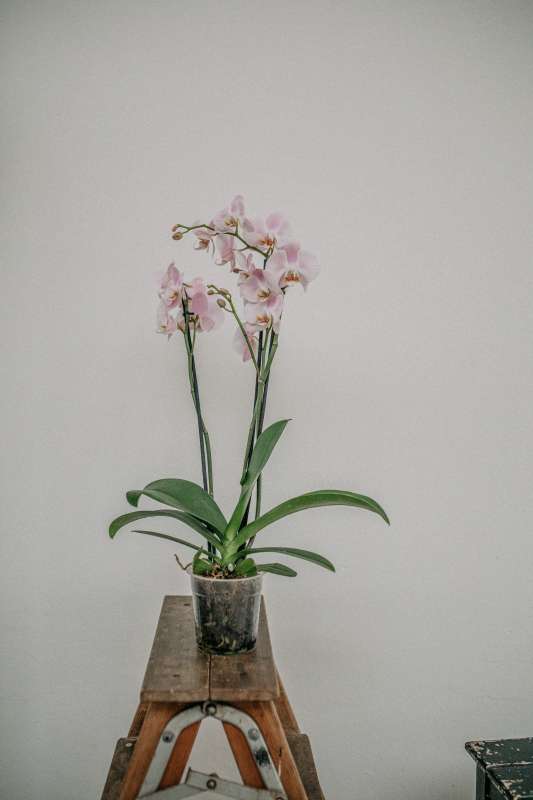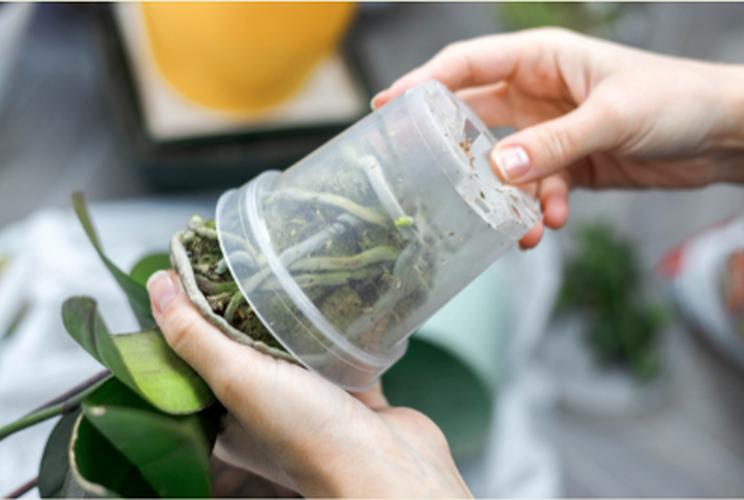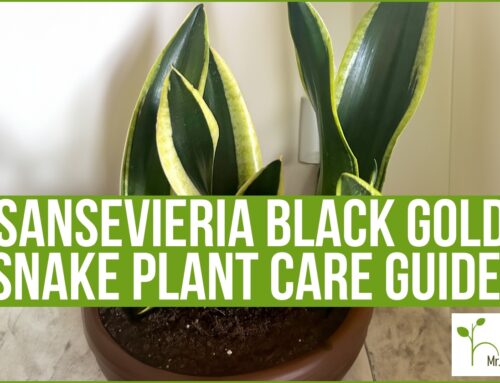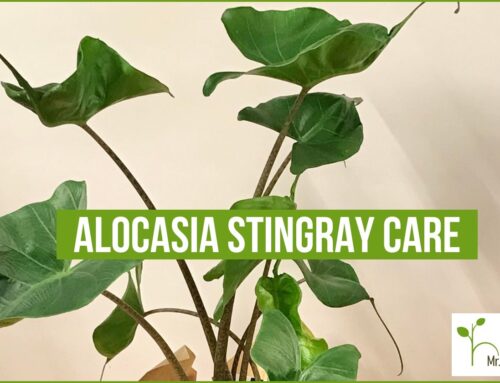
Moth Orchid or Phalaenopsis Orchid care is easy if you follow these simple instructions. Whether you’re not sure how to water them, how much light they need, you can’t get them to bloom, or even can’t keep them alive, this Phalaenopsis Orchid care guide is for you.
| Botanical Name (Latin Name/Scientific Name): | Phalaenopsis orchids |
| Common Name: | Moth Orchids |
| Light: | medium light (1,000 lux – 2,500+ lux) |
| Watering: | once the top half of the soil is dry |
| Soil: |
|
| Repotting: | Once a year |
| Temperature: | 55°F to 80°F (12°C to 26°C) |
| Humidity: | 40% to 70% but it adapts well to any humidity |
| Toxicity for Pets: | No |
| Toxicity for Humans: | No |
| Propagation: |
|
| Pruning: | Prune dead or diseased growth or when you want the plant to branch out |
Light Requirements
| Minimal amount of light: | 1,000 lux (100 FC) |
| Optimal amount of light: | 2,500+ lux (250+ FC) |
| Direct sun tolerance: | 2-3 hours |
| Category: | medium light |
Phalaenopsis Orchid needs a minimum of medium indirect light (over 750 lux which is over 75 foot candles), which means you should put your plant right next to a bright window, not further away. Light intensity drops significantly with each foot away from the window.
Some early morning direct sun is fine, but be careful not to burn your orchid. I suggest a minimum of 2,000 lux (200-foot candles) but of course, the more you can provide, the happier your orchid will be. Plants need light for photosynthesis.
There is no such thing as too much INDIRECT light. If you can provide your orchid with bright light (over 3,000 lux = 300 foot candles) even better. Amounts of 10,000-15,000 lux which is the minimum they get in nature will make the plant very happy. But if you can’t provide that, aim for a bare minimum of 750 lux to 2,000 lux (75 to 200-foot candles). You will need a light meter to be able to measure the amount of light your plant is getting. Please note that most light meter apps are completely imprecise and their measurements are useless.

White orchid bathes in soft light
If you notice your orchid isn’t blooming and it isn’t in the resting phase, make no mistake — it needs more light. Just keep it next to the brightest window you have.
Can I Use A Grow Light Instead Of Sunlight?
Of course, you can. Check out my Grow Light Finder to look up the best grow light for your Phalaenopsis (Moth Orchid).
Water Needs
More orchids are killed by overwatering than underwatering. Have this in mind when watering your Moth Orchid.
Here’s how to water an orchid:
- Check the potting medium by sticking your finger down, as deep as you can go. Water if dry. If in doubt, it’s better to wait a little longer than to overwater the plant.
- Always use room temperature water to water your Phalaenopsis Orchid; don’t use ice cubes. You don’t like getting a shower with ice water, neither do plants. Even if you have successfully used ice cubes until now, have no doubt they do not provide optimal conditions for root development.
- Thoroughly soak the bark or sphagnum moss, let all of the potting medium get wet.
- Water all the roots that are sticking out of the potting medium, so they don’t dry out and die.
- Let all excess water drain.
- Use a paper towel to remove water from the crown, to avoid rot.
- It’s best not to establish and stick to a watering schedule. Instead, monitor the potting medium and water accordingly.
Take a look at my video on how to water an orchid properly and not kill it:
If in doubt when to water your Phalaenopsis Orchid, it’s better to wait until the medium has fully dried out. You’ll be able to tell that your orchid really needs water when the roots and leaves become wrinkly but don’t wait for that to actually happen though. Maybe do it once or twice to gauge how long it takes for the plant to dry out in your home environment. It is better to underwater your orchid a few times than to keep overwatering it this is how most people kill them.

A proper Orchid care will help your plant growing white-pink flowers
If you notice your Phalaenopsis orchid’s leaves are getting wrinkly, it is most likely because the plant is not absorbing enough water. This can happen for two reasons:
- if you haven’t watered it in a while, so the plant is dry and needs more water
- if you have been overwatering it and its roots have rotted, so the plant doesn’t have anything to absorb moisture with.⠀⠀
If you notice the roots are getting mushy and soft, you must have been overwatering the orchid plant or it wasn’t getting enough light. If you pull the roots, and the outer part just slides off and reveals a string in the middle, that means the root has rotted.
Humidity Needs
The humidity range for Mother Orchid is between 40% and 70%. However, this plant will adapt well to the humidity in your home or office.
If you want to be sure what is the level of humidity you can use a hygrometer.
Temperature Requirements
The optimal temperature for Phalaenopsis orchids to grow is between 55°F to 60°F (12°C to 15°C).
If you have provided them with sufficient light, proper watering, fertilizing and repotting and they haven’t bloomed in a few years, try giving them these lower nighttime temperatures. If you take them out at night to stimulate blooming, bring them indoors again if the temperature goes below 50F (10C). But sporadic periods of high and low temperatures won’t harm them as long as their leaves and roots don’t freeze.

Moth Orchid plant requires temperature that should be provided
Fertilizing
If you need to fertilize your Orchid, make sure to use an orchid fertilizer. A great orchid fertilizer is the Michigan State University fertilizer. It’s NPK is 13-3-15. As the name says, it was created by Michigan State University (MSU) and it’s EXCELLENT for orchids.
Apply 1 spoon per gallon. Make sure to use it with distilled water or reverse osmosis water. If you’re using tap water, MSU has a different fertilizer formulation for it.
Whichever fertilizer you use, make sure to always follow the instructions on the packaging in terms of quantity of fertilizer to use and frequency of fertilizing. If not sure how often you should fertilize your orchid, keep in mind that less is always better. Too much fertilizer can damage the roots and even completely kill a plant.
Soil
Best orchid soil (better term would be potting mix) is bark or long-fibered sphagnum moss, or an orchid potting mix. Do not use regular potting soil. It retains too much water. The roots will not be getting enough oxygen and it will eventually kill your orchid.
Orchids are epiphytes, in nature they live attached to the bark of trees in tropical forests.You want to mimic this in your home by providing a potting medium that is porous and contains a lot of oxygen.
Repotting
I recommend repotting orchids annually because bark (their potting medium) decomposes faster than peat moss or coco coir. The particles become small and very fine, so they retain much more water than when they were large bark chips. Once that happens, the roots will start lacking oxygen and the orchid plant will start suffocating. This is why it’s even more important for orchids than for other houseplants to repot them once a year.
Here’s how to repot your Phalaenopsis:
- Remove all of the old medium (full repotting is especially important for orchids), trim all dead roots (only the dead ones), and pot into fresh bark or sphagnum moss. If you use moss, I suggest New Zealand long-fibered sphagnum moss.⠀
- If your Orchid has some soft, mushy roots, don’t hesitate to cut them off. If the outer layer of the roots can be easily pulled off, leaving only the middle string, that root is dead, you can cut it off. Cut off all roots that are not firm and are not white, gray, or green. Also cut off everything that looks completely dry and dead, like the remains of the last flower stalk.
- Don’t be afraid to cut any of the dead tissue, you won’t harm the plant
- Repot in the new medium – bark or sphagnum moss.
- Water thoroughly under a faucet. Fill up the pot with water and drain it well. If you’re using bark, you can also let it sit in water for a few minutes.

Repot your Phalaenopsis once a year
Toxicity To Humans
Phalaenopsis Orchid plant is not toxic to humans. According to Ehab A. Abourashed, Academic Editor from the National Library of Medicine, in the publication “Phenolic Compounds and Antioxidant Activity of Phalaenopsis Orchid Hybrids” from September 2016, this plant is considered a powerful antioxidant so it should be safe to humans.
Toxicity To Pets
Phalaenopsis Orchid is a non-toxic plant to pets according to the American Society For The Prevention Of Cruelty To Animals (ASPCA).
Pruning
Orchids should be pruned once the flowers have died off and dropped. For pruning your Orchid prepare a clean and sharp pair of scissors or pruning shears. Sterilize them with rubbing alcohol. Cut the flower stalk at the base, as low as you can.
You should also prune infected leaves and dead leaves. Cut off infected leaves near the main stem and discard them, to prevent the disease from spreading. If you’re removing dried, dead leaves, cut them off close to the main stem.
Propagation
You may have already noticed small plantlets called keiki (meaning “baby” in Hawaiian) that form from the nodes on the flower stem or near the base of your orchid.
Did you know that you can propagate a new orchid from them?
Let keiki continue growing until they have developed a few roots at least 1 inch long and two or three leaves. When the time has come to remove the keiki, sterilize the tweezers you will use to remove the keiki from the parent plant. Make a cut along the stem just below where the plantlet is growing. When cutting, make sure not to damage the roots of the keiki. If its root system is large, soak it in water to make it more supple and less likely to break. Then plant it in orchid bark and make sure the new plant is centered and stable.
Pests
Orchids can get infested with mealy bugs, scale and spider mites. To treat against mealy bugs and scale mix 0.5 teaspoon of systemic insecticide in a gallon of water and water the plant. If this is not sufficient, repeat the treatment in a week. Be careful as too much systemic insecticide can kill a plant.

To treat spider mites, use insecticidal soap, horticultural oil, or neem oil. Spray the whole plant thoroughly, topside and underside of all leaves and roots. Repeat the treatment twice a week until all pests are gone.
FAQs about Phalaenopsis Orchids
My orchid never blooms, why?
The most common reason why your orchid never blooms is that it’s not getting a sufficient amount of light. Flowering required a great deal of energy. And plants get that energy from light. In their natural environment, orchids get around 20,000 lux (2,000 foot candles) of light. In our homes, they sometimes don’t even get 200 lux (20 foot candles). How can they possibly bloom? They can’t.
Light is plant food. Plants need light to accumulate energy needed for blooming. Get a light meter and measure the light in your home. Then provide your orchid with a spot that gets at least 5,000-10,000 lux of light (500-1,000 fc).
My orchid’s leaves look wrinkly, why?
Wrinkly leaves mean that your Phalaenopsis is not absorbing enough water. This can mean that you either haven’t watered it in a while (underwatering), or that its roots have rotted because of overwatering, so the plant doesn’t have anything to absorb moisture with. Oftentimes symptoms of overwatering and underwatering are similar.
My orchid’s air roots have dried up and shriveled? What should I do?
If your orchid’s air roots have dried up and shriveled, it’s likely you don’t water your orchid’s air roots sufficiently. So, water them along with the rest of the plant. Make sure to drench the air roots every time you water your Phalaenopsis. In case you don’t, they may dry up completely. When I mention air roots, I am simply referring to the roots that are suspended in air, and not buried in the potting medium. All of the roots of your orchid are the same, they are all aerial roots as orchids are epiphytes.
To learn more about orchid aerial roots and aerial roots in general, check out the linked blog post on the topic.

Roots of an Orchid wrapped around a terracotta pot
What can I do about sunburned leaves?
The sunburned tissue is dead, you can’t revive it, but the leaf parts that are still green are very much alive and photosynthesizing, so I don’t recommend cutting off the leaves. Orchids aren’t particularly fast growers, so you don’t want to remove any leaves that are still providing benefits for the plant (photosynthesis).
What can I do about sunburned leaves?
The sunburned tissue is dead, you can’t revive it, but the leaf parts that are still green are very much alive and photosynthesizing, so I don’t recommend cutting off the leaves. Orchids aren’t particularly fast growers, so you don’t want to remove any leaves that are still providing benefits for the plant (photosynthesis).
Why are my orchid’s buds falling off?
If your orchid’s buds are drying out and falling off, you are experiencing so-called bud blasting. Bud blasting can happen for multiple reasons. One reason is shocking the plant with cold temperatures. Another is underwatering of a plant in bloom. Buds will also fall off if the plant has been overwatered.
It’s more likely for this to happen if you’re repotting an orchid in bloom, so to reduce the chances of it happening, do not repot orchids until they finish blooming and the flower stalk dries out.
Happy Growing Your Phalaenopsis Orchid!
Now that you know all there is to know about Phalaenopsis orchid care, you can start enjoying their unique beauty and showy flowers. If you still have any doubts or additional questions regarding orchid care, don’t hesitate to schedule a consultation with me.
Yours Truly,






Thank you for a most comprehensive article. I learned more here than all the other blogs combined. I look forward to advice on the care of slipper orchids. Mine is struggling.
Hi Wendy, thank you so much! I’m really happy to hear this. It makes the time investment for writing this article worth while. If you find the articles useful, consider subscribing to receiving updates when new articles are out (box on the right side of the screen if on a computer, and bottom of the page if on a phone) 🙂
Thank you for a very informative article ,special reference to the section on light.
You’re welcome 🙂
Thanks for putting the light requirements in terms that real people use and not an algebra problem.
Light, of course, is the most important factor in houseplant growth. But nobody knows what bright and indirect mean.
Lux and especially foot candles are things people can understand and work with.
Hi Bryan, happy to help. I love educating about light and I’m hoping more and more people will understand light better as time goes by 🙂